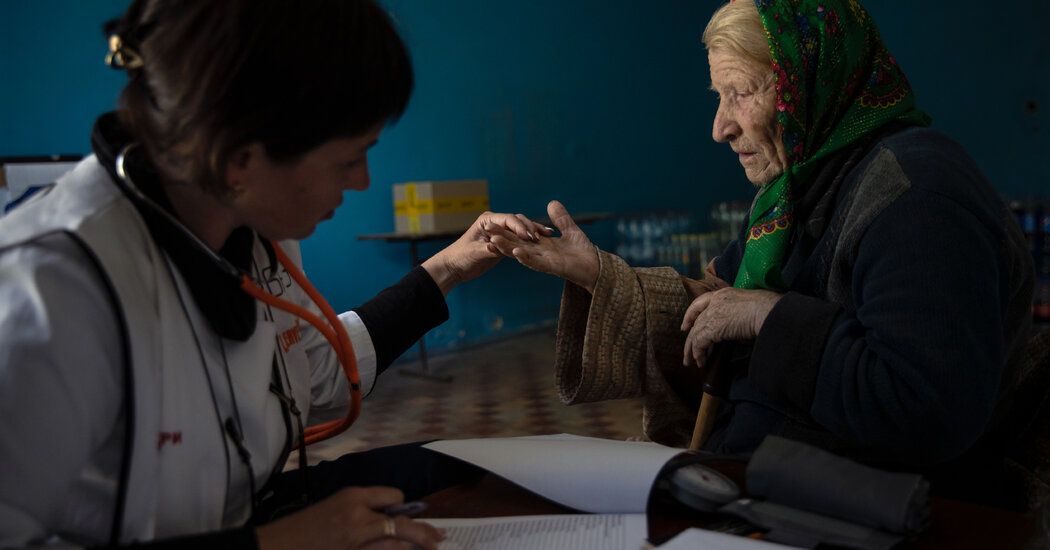Ukraine May Have Begun Counteroffensive, U.S. Official Says: Live Updates
Image The Ukrainian Army’s 95th Air Assault Brigade in a wooded position targeting Russian forces in eastern Ukraine on Friday. Credit... Tyler Hicks/The New York Times
Ukrainian forces have stepped up artillery strikes and ground assaults in a flurry of military activity that American officials suggested on Monday could signal that Kyiv’s long-planned counteroffensive against Russia had begun.
The fighting, which began on Sunday, was raging along several points on the front line, but to the east of where many analysts had expected Ukraine’s counteroffensive to begin. Even starting in that eastern area, experts said, would allow Kyiv’s troops to try to accomplish the same goal: Head south toward the Sea of Azov and cut off the land bridge connecting occupied Crimea to mainland Russia.
The Russian Ministry of Defense said on Monday that a major Ukrainian operation had begun at five locations in the eastern Donetsk region and that it had repelled the assaults and inflicted casualties on Ukrainian forces. Moscow’s report could not be independently corroborated.
Ukraine’s deputy minister of defense, Hanna Malyar, said on the Telegram messaging app that Kyiv’s forces were “moving to offensive actions,” continuing a defense that began when Russia invaded its neighbor 15 months ago. “A defensive operation includes everything,” she said, “including counteroffensive actions.” The devastated city of Bakhmut, which Moscow captured after months of brutal fighting, was the epicenter of the fighting, she said. But Russian military bloggers said that a stronger Ukrainian attack had begun elsewhere in Donetsk on Monday morning, near the town of Velyka Novosilka. Mikhail Zvinchuk, a pro-Russian blogger who writes under the pseudonym Rybar, described intense fighting as Ukrainian soldiers in German-made Leopard tanks seized control of the nearby village of Novodonetske on Monday evening, a possible sign that Kyiv had pushed its NATO-trained forces into the battle. Image Soldiers from Ukraine’s 95th Air Assault Brigade on Friday. Credit... Tyler Hicks/The New York Times Ukraine has long said it will make no formal announcement about the start of its counteroffensive, and this weekend the Ukrainian military released a video on the Telegram messaging app renewing its plea for operational silence about the expected counteroffensive, with the slogan, “Plans love silence.” Ukrainian officials have not told their American counterparts exactly when the battles would start, but provided them with a time frame for when they intended to begin the push against Russian forces. Sunday fell within that time frame, said U.S. officials, who spoke on the condition of anonymity to discuss sensitive intelligence. The American officials partly based their assessment that Kyiv’s counteroffensive had likely begun on information gleaned from U.S. military satellites, which had detected increased movement within the Ukrainian military positions. The satellites have infrared capabilities to track artillery fire and missile launches. U.S. military analysts also said they believed that Ukrainian units were making an initial push to determine the positions and strength of Russia’s forces — a traditional tactic that Americans had been training Ukrainian forces to use. An American official said this testing for potential weaknesses in Russian defenses, manpower and morale — what the U.S. military calls “reconnaissance by force” — would most likely continue for several days. If successful, the official said, the main thrust of the Ukrainian counteroffensive would become more evident during that time. At the White House, John Kirby, a spokesman for the National Security Council, said he would not go beyond the statement that Ukrainian officials made, saying the start of a counteroffensive was for Kyiv to discuss. “What I can speak to is how hard we worked to prepare them to be ready,” Mr. Kirby said. “The president is confident we did everything we could over the last seven, eight months or more to make sure they had the capabilities to be successful.”
Show more
Source: The New York Times


